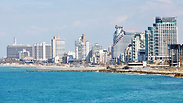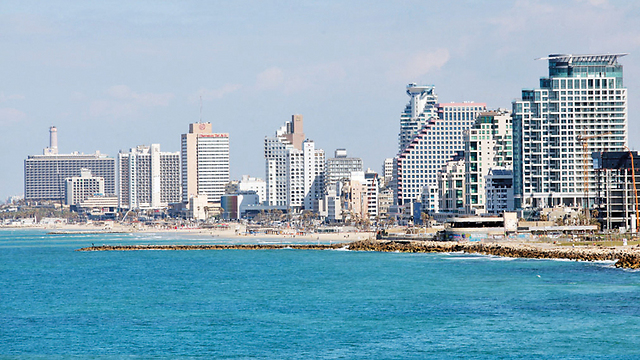
OECD finds Israel overall high on health, low on environment issues
A new report by the OECD finds that while Israelis are overall satisfied with their life, the country's different regions score varying degrees in a variety of fields; while Tel Aviv leads in well-being, pay and housing, with the South, North and Jerusalem tending to trail behind in several areas.
The OECD checked well-being in six different geographical areas of the country.
The Tel Aviv region leads in overall well-being, with a mark of 8.9 out of 10. The Center and South regions are tied in second place with 8.5, while the Jerusalem and Haifa regions were ranked at 8.1. Lowest on the scale was the North region, which received a mark of 7 out of 10.
The well-being in Israel was measured across the 11 dimensions of the OECD Well-Being Framework, which include, under quality of life: Health status, work-life balance, education and skills, social connections, civic engagement and governance, environmental quality, personal security and subjective well-being. The dimensions measuring material conditions were: income and wealth, jobs and earnings and housing.
When looking at the average of all 11 dimensions, the Tel Aviv region was found to be leading with a score of 6.44, followed by the central region with 6.36. At the end of the list is the northern region, with an average of only 4.60.
The OECD's Health Index relied on two parameters: life expectancy and the age-standardized mortality rate. In this section, most of the regions in Israel scored high compared to regions in other countries in the OECD. However, there was still a considerable variance found between the different regions in Israel.
Israel's Center region scored highest on the Health Index, with 9.3 out of 10. The high mark is a result of an average life expectancy of 83 and the fact there are 6.7 deaths on average for every 1,000 people.
On the opposite side of the scale is the South region, which received a 6.9 score, with a mortality measure of 7.7 and a life expectancy of 80.8 years. A close second was the North of Israel, which scored a 7.2.
The OECD did not find large regional differences regarding education. This is likely due to the fact that its education score reviews working citizens who with a minimum of a high school education.
Despite not finding very different results, the Center of Israel was also found to lead in the field of education, with 90.4% of those employed in the region having at least a high school education. The North comes in last, with only 83.3% with a high school education.
A large percentage of variability was found in employment. While Tel Aviv takes the lead with a 9.4 out of 10 employment measure, Jerusalem only got a 5.2 rating. The OECD’s employment rating is based on two parameters: an employment measure and an unemployment measure. While Tel Aviv was found to have an 81.9% employment rate and a 5.4% unemployment rate, Jerusalem scored a 56.1% employment rate and a 7.5% unemployment rate. A possible explanation for this difference is the percentage of members of the Jerusalem ultra Orthodox community who do not work. The North also did not fair well in this measure, gaining an overall 6 based on a 61.4% employment rate and a 7.3% unemployment rate.
And what about the difference in pay? The Tel Aviv region leads with an albeit low score of 2.7, based on a global comparison that considers all the local regions in the world. In Tel Aviv, the average disposable income rate per person in Tel Aviv stands at $12,775 a year.
The North was found to be the lowest in this measure, scoring 1 out of 10 with an average disposable income of $6,723 a year.
Israel scored low scores regarding environmental concerns, as well. Tel Aviv still lead the pack with a 1.9 score, while the South, Jerusalem and North regions all scored a perfect 0. The one relative surprise was the Haifa region, which scored a 0.5 despite being notorious for its high level of air pollution.
Housing and particularly the number of rooms per person comprised another issue that the OECD reviewed. Haifa and Tel Aviv lead with an average of 2.2 rooms per person, with Jerusalem scoring a 0 in this measure.











